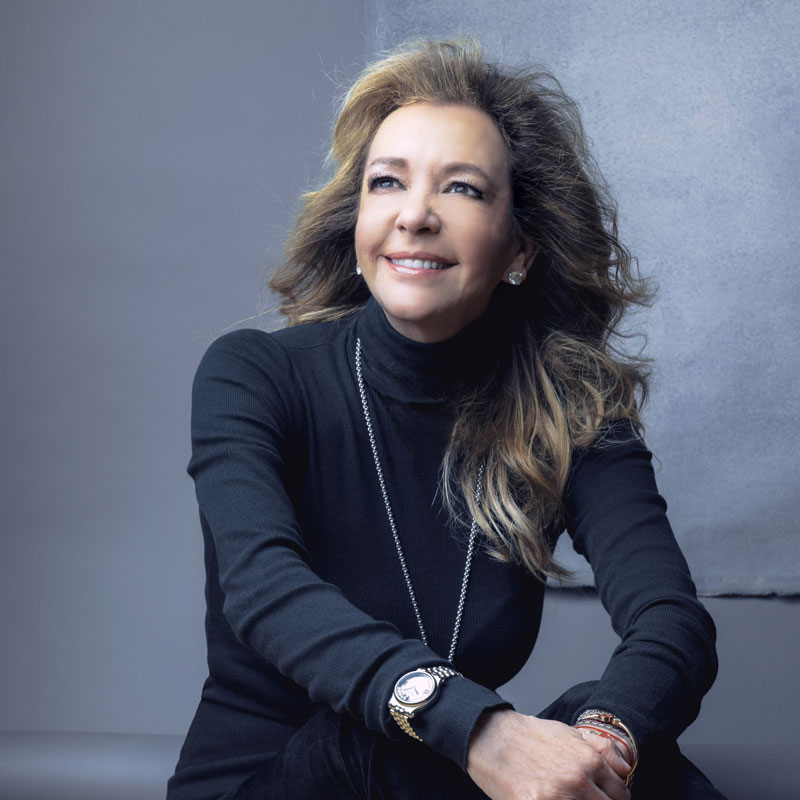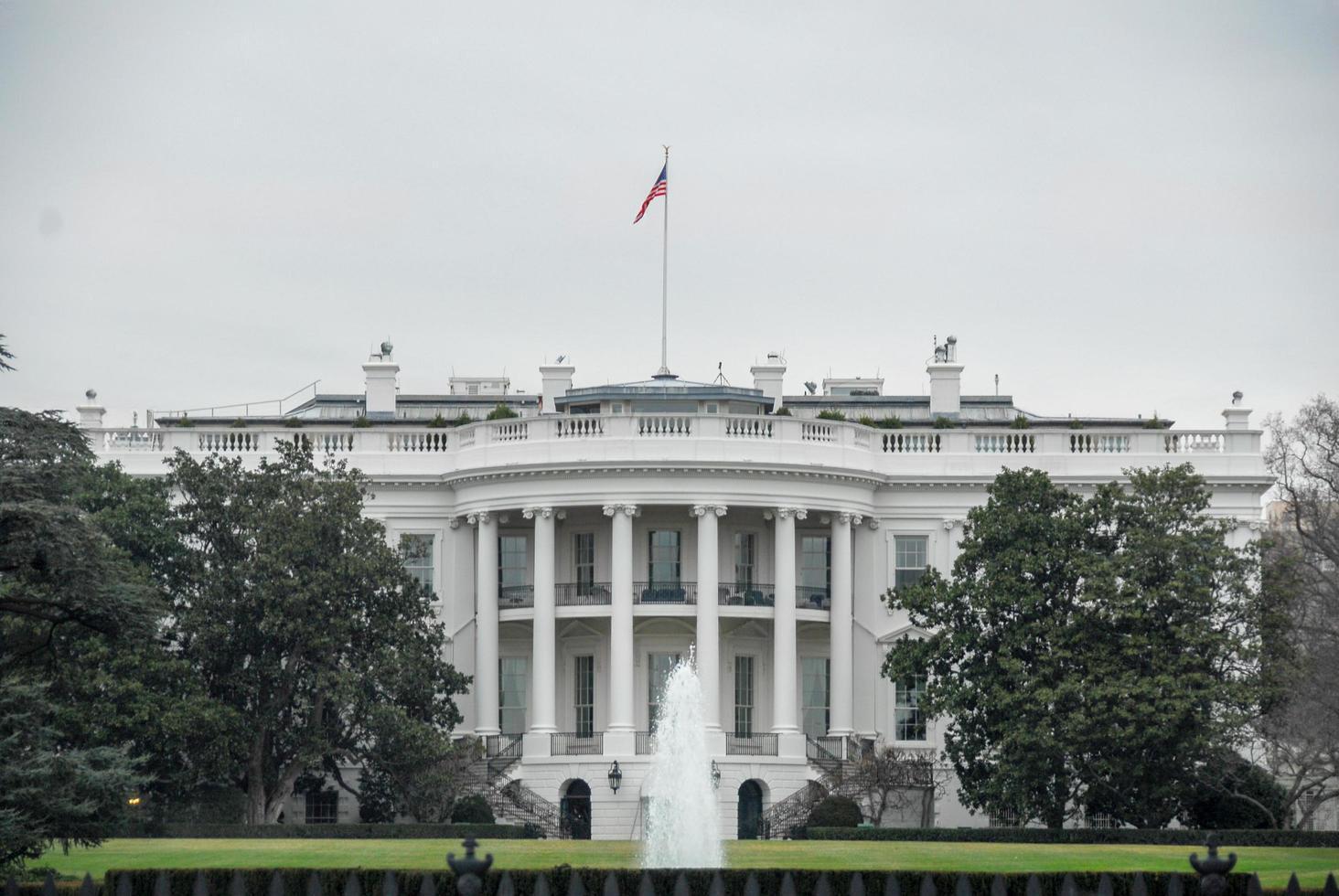Founded in Sonvilier, in Switzerland’s Jura region, in 1860, Chopard – headquartered in Geneva – has been owned by the Scheufele family since 1963 and is today managed by the second generation. The group, which has some 2,000 employees, is famous worldwide for its watch and jewellery collections.
Chopard, a family business
Chopard is a family-owned company founded in 1860. It came into your family’s possession in 1963. The Scheufele family was already making watches and jewellery when it purchased Chopard, wasn’t it?
Caroline Scheufele (CS): Absolutely. We’re originally from the town of Pforzheim, in Germany’s Black Forest region. Pforzheim has been known for its goldsmiths since the 18th century and was even given the nickname Die goldene Stadt, the gilt-edged town. The Margrave of Baden was behind this development. My great-grandfather, who was already working in the trade, founded Eszeha, a company whose name was made up of the first three letters of our surname, pronounced as in German: “S C H”. Even back then, the company produced watches. Eszeha was handed down to a further two generations of our family and in the 1980s was folded into Chopard. My brother and I are the fourth generation in the business.
Do you think that Chopard is seen from the outside as a family business?
CS: Our foreign business partners, especially our franchise boutiques and the multibrand stores we work with, know that we are. In the Middle East we’ve been working together for generation after generation. In that region there are still many agents who have been running our boutiques for several generations, and my father already had business dealings in some instances with the parents of the people my brother and I work with today. On the client side, our regulars plus our VIP clientele – those who purchase our most prestigious pieces – are fully aware of our company’s family ethos.
In your view, what are the hallmarks of a family-owned company?
CS: To start with, I’d say that our employees are proud to work for a family as opposed to a multinational, where the bosses tend to change every two or three years and employees are often considered like numbers. Here they are happy that top management doesn’t change and remains approachable. We have an open-door policy. Any member of staff can come to us if they have a question or an issue, or want to put forward an idea. I think that’s why some members of staff stay with the company for 25, 30 years or even longer. Some of them even did their apprenticeship with us and then stayed on until retirement.
At the same time, working for a family is not always straightforward. That’s a fact. Because families have several members, each with their own personality. Yet I’m sure being family-run has a positive impact on the company. I’ll give you an example. We run a boutique in Gstaad, a resort where I own a chalet and where my parents spend a great deal of time. This boutique has a very different feel from the others as it has an alpine feel. The issue is that our two sales staff are retiring and so need to be replaced. For me, it was essential that my parents became part of the recruitment process. I wanted the final choice to be to their liking. The candidate we were interviewing was sat opposite three members of the Scheufele family, who were watching his every move. He must’ve really been scared (laughter)! This is the kind of situation that would never happen in London or New York, where my brother or myself do the hiring. Gstaad is a special case but is a rather typical illustration of the family ethos that runs through the company
“Our strengths are the values that we champion, the fact that we can work as a family and, most of all, our responsiveness. That’s a definite advantage. At Chopard, decisions are made quickly.”
In your opinion, what are the strengths and weaknesses of this type of business?
CS: Our strengths are the values that we champion, the fact that we can work as a family and, most of all, our responsiveness. That’s a definite advantage. At Chopard, decisions are made quickly. My brother, my parents and myself all live close by. For example, an important decision for the company might be made on a Sunday morning during a brief exchange. This was the case during the pandemic: we adapted extremely quickly to the Covid measures.
Working as a family can also be complicated at times, as we all have our personalities – some are stronger than others. But on the whole, there are more plus points. We can also run into problems, as an independent company, when it comes to harnessing specific opportunities. If we need to set up shop in a strategic location, we sometimes have to fight harder because we represent a single brand, as opposed to Richemont and LVMH.
What values did your family want the company to champion or embody?
CS: First and foremost, hard work. The Scheufele family coat of arms represents two crossed shovels: Schaufel in German. That’s where our name comes from. Next, we are committed to passing on and raising awareness about our craft. Watchmaking and jewellery encompass a broad range of skills. In our view, these occupations must be made accessible to young craftspeople. Our industry tends to keep to itself. As a result, the general population is not very aware of the jobs it offers. It’s our task to highlight the beauty of this craft among the younger generation.
Sustainable development is also important to us. In 2013, back when our competitors did not yet place importance on the matter, we were already championing the idea of transparency in the luxury goods industry, based on our concept of responsibly sourced gold. The idea was guaranteeing that the mines where the gold used at Chopard was extracted met specific criteria. One example of these criteria is that the mercury, a highly toxic element used during extraction, must not be discharged into running water. We also guarantee that miners earn a fixed wage, enabling them to send their children to school. Their pay is not dependent on striking gold, so to speak. We started out with one mine. Today, many more meet the responsible business standards that we have set. We are also active in sustainable development for precious gemstones, especially coloured gemstones, but there’s still a long way to go. Mines are often located in countries with murky business conditions. The money earned from gemstone extraction is often used to fund illegal activities. Changing mindsets is a difficult job! But to achieve that, everyone along the luxury production chain needs to work hand in hand, work together to solve the problem.
“Sustainable development is also important to us. In 2013, back when our competitors did not yet place importance on the matter, we were already championing the idea of transparency in the luxury goods industry, based on our concept of responsibly sourced gold.”
Joining the family firm
Did you work for another jewellery house before starting your career in the family firm?
CS: Not at all. I was trained at the Gemological Institute of America (GIA). I also spent a short time at a fine arts institute. Although I learnt some Spanish and Italian, I soon realised that I was not cut out for academia. My father then suggested I go and work at our company in Germany. So that’s where I began my career, rotating through every department, from packaging and export to after-sales service. In return, I was allowed to spend two days a week in the design department, because that’s what I wanted to do. A year later, I was back in Geneva.
When you arrived in Switzerland, what strategic vision did you have for Chopard and how did your contribution shape the development of your company?
CS: Once I came back to Geneva, I shared an office with my brother. We work well together, much like yin and yang. Straight away I had my own projects to manage and soon took an interest in what was going on in the design department. I also started bringing to bear my strategic vision of the brand. One of my first ideas that impacted Chopard’s development was the need to open directly owned boutiques. At the time we had none. All our products were sold through multibrand chains such as Bucherer. It seemed vital to me to sell our products ourselves, so we could enhance our visibility. After much insistence, a first franchise boutique was inaugurated in Hong Kong, followed by a first entirely self-managed boutique in Vienna. That was followed by Geneva. Some years later, my father acknowledged that I’d had the right strategic vision for Chopard, bringing us closer to end clients. Today we have 13 subsidiaries, 60 directly owned boutiques and around 90 franchise boutiques worldwide.
Can you give an example of how you have added value to Chopard’s business?
CS: I’ve always wanted to create and design. I even designed my first piece of jewellery when I was 16: the Happy Diamonds Clown Pendant. Back then, Chopard did not manufacture jewellery, only watches. I’ve always enjoyed visiting the circus and watching the clowns. They have a knack for making everybody laugh, despite their sad faces. So I thought up this clown-shaped pendant with a see-through belly in which you could see diamonds bobbing around. My father had one made and gave it to me as a Christmas present. Yet one day while visiting the manufacture, I came across several clowns of different sizes. I was astonished as I thought I had the only one. My father then explained to me that he’d used that model as the basis of a limited-edition series, for commercial reasons, and I would understand later… In fact, this was the beginning of our jewellery manufacturing business!
Was your move to Geneva seen as a natural and legitimate step in the eyes of non-family staff?
CS: It was not a natural step for everyone. I had to ruffle some feathers and show what I had to offer. Someone even said that if I joined, they would leave, even though I’d done nothing to spark that kind of animosity. Things were very different compared to when my brother joined. There was not that kind of reaction.
How did you go about winning people over?
CS: By contributing my strategic vision and creative spark. Also by being resourceful. One day, I was asked to represent our company at a trade fair in Manilla. My father officially appointed me as a vice-president, as I was due to meet politicians and it was important for them to be able to clearly grasp my position within the company. When I got off the plane, I was in jeans and a t-shirt, my hair braided. The delegation waiting for me on the tarmac was clearly expecting a woman who looked more like a vice-president. At my young age, nobody could imagine that I might be that woman. In their eyes, I was just a kid (laughter). I also had to give a speech to mark the opening of the boutique. So I called my dad in a complete state, and he said to me, “You’ll just have to deal with it yourself” (laughter). I stayed up all night drafting my speech, a total nightmare, but in the end everything went well.
The family-run company as a
corporate blueprint
When does business stop being “family”?
CS: At Chopard, things are quite straightforward, unlike other companies such as Hermès or Swarovski, which are owned by several members of the same family. Apart from my parents and myself, only my brother and his wife work at the company. Karl-Friedrich has three children, but none of them have yet made their career choices. Our family unit is therefore quite small.
What attributes do family members have to develop individually and collectively to get the best out of this corporate model?
CS: You need to understand how the company and its departments function, as I had to myself. Next, creative flair is not something you can learn. You either have it or you don’t. By contrast, management, accounting and marketing are core areas in which a fair amount of expertise is required. Marketing and communication, especially in the digital sphere, have moved centre stage in recent years. Covid sped up the trend through digitalisation of our industry and the expansion of e-commerce. All these technological considerations have become vital. It’s definitely the job of the younger generation to develop that kind of expertise. I never wanted a PC at home but sadly no longer have the choice. In any case, the next generation will have to do their bit. Being part of the Scheufele family will not be enough. This would not be right for Chopard.
What can be done to reduce the risk of conflict (which is often seen as inevitable) between family members in connection with the business?
CS: By communicating. In our business, the majority rules. If you’ve got a good idea, you must put forward the right arguments and know how to win people over.
Family business structure and governance
Your brother, parents and yourself all have a role to play in the company. How do you allocate your roles?
CS: Figures are my father’s job, though at times he’ll also have a creative brainwave. My mother focuses on day-to-day management. My brother oversees everything connected with men’s watches. I look after the entire women’s collection, even though I sometimes also comment on the men’s collection (laughter). I also oversee the boutiques and the retail channels. Concerning marketing, my brother is responsible for our partnership with the Mille Miglia motor race in Italy, and I’m the gobetween for the Cannes Film Festival. But since we’ve always shared an office, communication is instantaneous and everyone knows everything that’s going on. In that respect, we make the big calls collectively, especially as concerns new advertising campaigns.
“As a family-owned company, we are committed to continuity and have a strong sense of responsibility. The same ethos applies to our support for charitable causes and sustainable development.”
In your opinion, would it be useful or advantageous to clarify the relationship between family members, perhaps by using a family charter or a shareholder pact covering the basics about what the family members want or must fulfil in relation to the family company?
CS: Our parents have already transferred their share of the company to us. Even though they remain active and act as our brain trust, ownership is no longer a consideration for them. Between my brother and myself, we haven’t felt the need to put everything down in black and white. But we’ll need to take a longer look at the issue sooner or later, especially when it’s time to start thinking about handing down the business. In contrast, we’ve taken the time to write a family charter enshrining our values. It’s a useful exercise. But I don’t think it’s worth making a song-and-dance over it.
Does estate planning as a concept therefore seem worthwhile?
CS: Definitely. As I’ve stated, we’ll need to think sooner or later more intentionally about handing down the company. But in our case, it’s still early days. We’re not yet sure whether the next generation will want to work for the company
With that in mind, would it be worth bringing non-family members on board and, if so, into which roles?
CS: In the first instance, we’d like as much as possible to reach familyoriented solutions. Next, we’ll definitely need to commission a specialist for the more legal aspects. At the same time, I’m not against the idea of using outside arbitration if ever required.
Philanthropy in a family-run company
In your opinion, how important is it for a family-owned company to commit to charitable causes?
CS: As a family-owned company, we are committed to continuity and have a strong sense of responsibility. The same ethos applies to our support for charitable causes and sustainable development.
Is philanthropy part of your family tradition or have you added this to the business based on your own life experience?
CS: For us, it’s part of our family tradition and everyone in the family is equally committed to it. My father is heavily involved with the José Carreras Leukaemia Foundation, while my brother is committed to conservation projects, especially in the Alps. I support the Elton John Aids Foundation. But what impacts me the most is everything that’s connected with sustainable development and the materials we use. I was the one who started the project, called The Journey, and emphasised its importance. But we’re not doing all this for the sake of image. There are many other causes we support but don’t mention. We don’t do it to shine. Signing a cheque is easy. We also try to put our heart and soul into it.
Which criteria do you use for choosing your charitable commitments?
CS: Our personal bond of friendship with the founders of these charities is fundamental. This applies to my father with José Carreras, and to myself with Natalia Vodianova and Petra Nemcova. Elton John is also an old friend. So it’s never impersonal. Knowing people is important, enabling us to see where the money goes so we can be certain our support helps to advance the causes we champion.
You’ve dedicated some of your collections such as Happy Hearts to one or more philanthropic initiatives. Is this a way of getting more involved than simply by donating money to a charitable foundation?
CS: Absolutely. In our Happy Hearts collection, we devote three ranges to these long-term causes. The pink hearts are dedicated to Natalia Vodianova’s Naked Hearts Foundation, which supports the many autistic children in Russia. Proceeds from the sale of red hearts go to the foundation run by our ambassador Petra Nemcova, All Hands and Hearts, which rebuilds schools in disaster-stricken areas. She was in Thailand in 2004 when the tsunami struck, which swept away her fiancé. So she decided to do something to help the victims of natural disasters. To date, she has been instrumental in the building of 160 schools worldwide. We also support the Education Above All programme, initiated by HH Sheikha Moza bint Nasser of Qatar, which has to date helped more than 10 million children into education. I’m currently working on a new design in support of these ventures.
Succession and passing down assets in a family-owned company
One of the challenges facing familyowned companies is handing the baton to the next generation. What’s your opinion and experience in the matter?
CS: My grandfather had confined my father to his goldsmith’s and watchmaker’s bench. He didn’t have a broad vision about how companies work. Sadly, he died young and my father quickly had to learn how to manage the firm from A to Z. My mother’s father, who was also active in the trade, helped him considerably. My father learnt from this experience and wanted my brother and myself to be involved as much as possible and have our own experiences. So you could say I was thrown in at the deep end.
How can future generations be prepared to take over the family business?
CS: They must be encouraged to be part of the business and join the firm, but it’s also up to them to show willing. My parents, my brother and I have poured our heart and soul into our work. That’s what’s needed to succeed. You must also be capable of making sacrifices for the company, and not everyone can do that. For those of the next generation who’d like to join the company, we should, I think, entrust them with projects periodically. But as was the case for me, it’s especially important to spend plenty of time at our sister company in Pforzheim, Germany. It’s a town with a goldsmith tradition. People are hard-working and there’s not much else going on to distract you from work. It was an excellent place for me to learn my trade. My supervisor wanted me to outperform my peers and so set extremely high standards. I had to work twice as hard as my colleagues simply because I was the boss’ daughter and had to prove myself.
In your opinion, what are the tell-tale signs that family business owners should change the structure or even sell the business?
CS: For us, that time hasn’t yet come. The next generation must first decide on the direction of their careers and get some solid work experience under their belt. Currently, my brother’s children are still studying. My nephew is enrolled in the Lausanne Hotel School, where he is also active in one of our side activities connected with the wine trade.
“It is important to encourage future generations to be part of the business, but it’s also up to them to show willing.”
Read also:
- Switzerland
- 06/07/2022
- Switzerland
- 06/07/2022
Chopard in figures
- 1860 first manufacture established by Louis Ulysse Chopard, in Switzerland’s Jura region.
- 1963 Paul-André Chopard, the founder’s grandson, sells the company to Karl Scheufele III.
- 5 generations at the helm since Chopard was formed (3 generations from the Chopard family, 2 from the Scheufele family).
- 4 generations of Scheufele family members active in watch and jewellery making. 2 Co-Presidents: Caroline and her brother Karl-Friedrich Scheufele.
- 40 trades across three production sites.
- 2,000 employees.
- 1,200 points of sale and over 150 Chopard boutiques worldwide.
- 100% ethically sourced gold used in Chopard’s watch and jewellery production since 2018.




